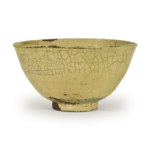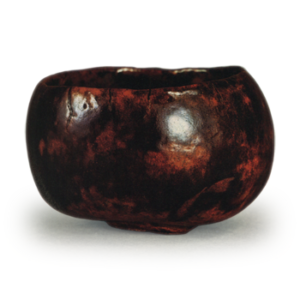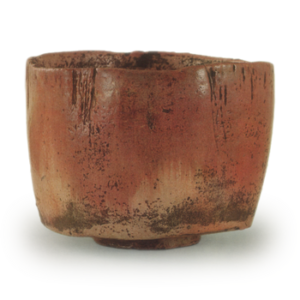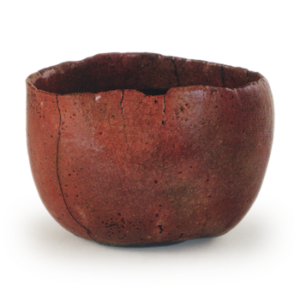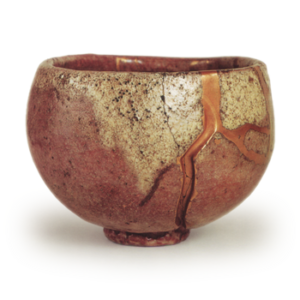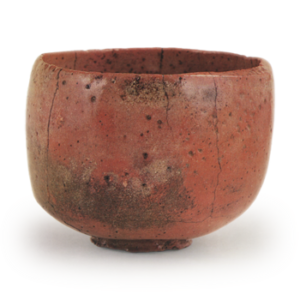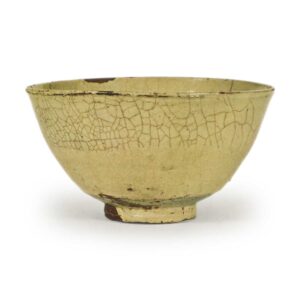
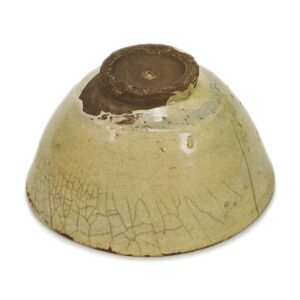
Fujita Art Museum
Height: 7.9-8.2cm
Diameter: 14.0-14.7cm
Outer diameter of foot ring: 5.5cm
Height of foot ring: 1.0cm
The name “tamago-te” (egg-hand) comes from the color of the glaze, which resembles the color of an egg, and the name of this tea bowl, Usugaki, was probably given because the color of the glaze is similar to the slightly ripened skin of a persimmon.
The most distinctive feature of tamagote is its clay and glaze. The clay is a fine, soft, light brown, and the glaze is soft, with cracks, and has a slightly yellowish tinge and a glossy finish, giving it a rich, creamy texture.
The shape is slightly shallow with a tight waist, but it is close to Kumagawa ware in terms of the way it is made and the similarities in the clay and glaze, so it can be considered a type of Kumagawa ware. At first glance, it also has a similar feel to Katate ware, but tea masters distinguish between the two and used to call Katate ware “warakate” (soft hand). This is probably due to the characteristics of the clay and glaze. Tamago-te is extremely rare, and in many cases, people mistakenly read it as katate, kohiki, or Kumagawa because of the similarity of the glaze.
The foot ring is made in the shape of a bamboo joint. The bottom of the inside is covered with a glaze that extends from the bottom of the inside. Many of them have several vertical cracks running from the rim to the body, and there is a mirror-like crack in the middle, as well as eyes.
Usugaki is a thinly made piece that fulfills the promise of the egg-hand, and it is light and soft to the touch, with a neat, tapered shape. The large cracks and vertical cracks around the rim add variety to the glaze, which tends to be monotonous, and create a beautiful scene.
The foot of the bowl is carved with a large scraper, and the inside of the foot is rounded in the Kumagawa style, and the inside of the helmet is glazed as promised. The foot of the bowl shows the natural variation of the glaze breaking off, and the inside of the bowl is unglazed. The inside of the bowl is beautifully carved with large cracks, and the mirror-like surface is wide. There are four eyes.
The tea book also explains that the egg-handled tea bowl is “a refined piece”, and the first thing to look for is its high level of refinement. In particular, the book mentions the old-fashioned hand and the Kumagawa as being easily confused, and in these cases, the presence or absence of refinement is also a major guide to identification.
Inner box, gold powder characters on lid, Kobori Jūzaemon “Koraibukaki”
It was originally owned by Kobori Enshu, and later passed to Tsuchiya Sagami no Kami. In 1792, it was sold at an auction of the Tsuchiya family collection and passed to the Kinoshita family, and then to Osaka’s Tennojiya Chubei. It was later passed to the Osaka Fujita family, and has been in their possession ever since. After the war, it became part of the Fujita Museum collection when the museum was established.

